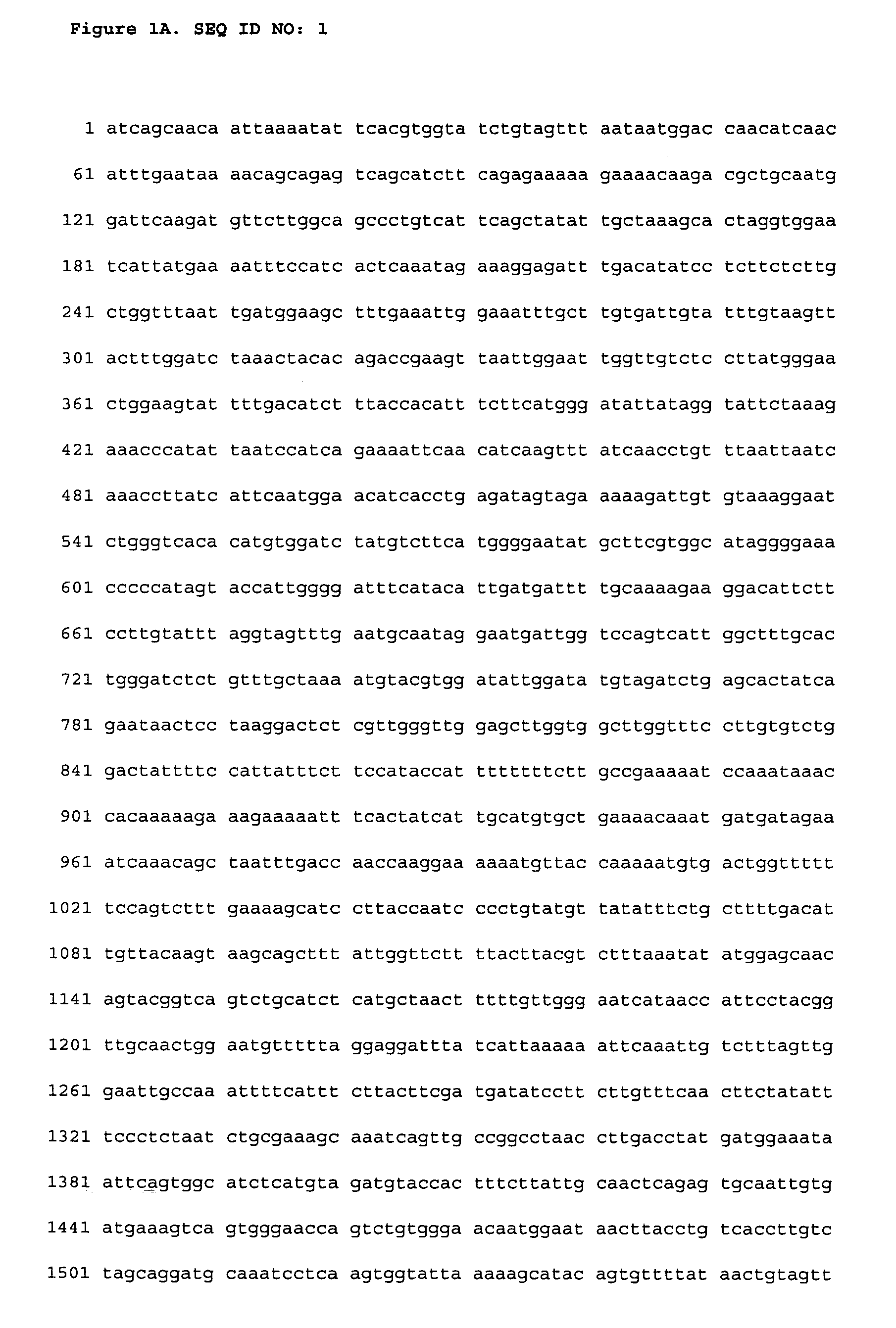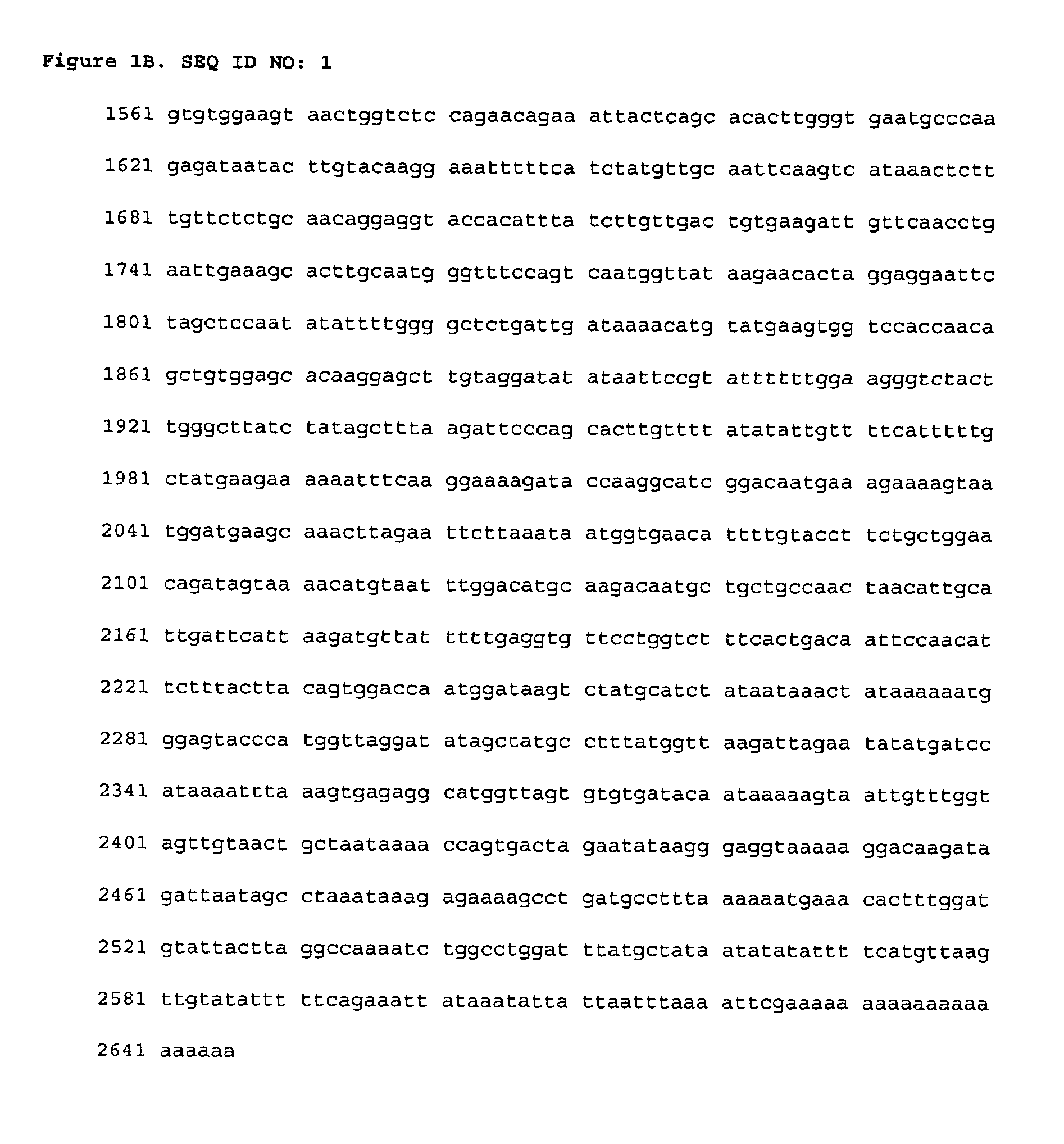Method for detecting a differentially expressed sequence
a technology of differential expression and sequence, applied in the field of nucleic acid sequences and proteins, can solve the problems of inherently risky, uncomfortable, and expensive endoscopy, and achieve the effect of modifying the expression level of nucleic acids
- Summary
- Abstract
- Description
- Claims
- Application Information
AI Technical Summary
Benefits of technology
Problems solved by technology
Method used
Image
Examples
Embodiment Construction
[0031]The invention relates to nucleic acids having the full length cDNA sequence of SEQ ID Nos. 1, 3, 5, or 7, or a sequence complementary thereto, and genes corresponding to these sequences, and to polypeptides and proteins encoded by these nucleic acids and genes, and portions thereof.
[0032]The invention further relates to the polypeptide sequences encoded by the mRNA sequence complementary to the cDNA sequence of SEQ ID Nos. 1, 3, 5, or 7, respectively including, but not limited to polypeptides having the amino acid sequence of SEQ ID Nos. 2, 4, 6, or 8.
[0033]Polypeptides and proteins that are variants of the polypeptides and proteins of SEQ ID Nos. 2, 4, 6, or 8 also are within the scope of the invention. The variants may differ from the wild-type protein in having one or more amino acid substitutions that enhance, add, or diminish a biological activity of the wild-type protein. Once the amino acid change is selected, a nucleic acid encoding that variant is constructed accordin...
PUM
| Property | Measurement | Unit |
|---|---|---|
| temperature | aaaaa | aaaaa |
| temperature | aaaaa | aaaaa |
| temperature | aaaaa | aaaaa |
Abstract
Description
Claims
Application Information
 Login to View More
Login to View More - R&D
- Intellectual Property
- Life Sciences
- Materials
- Tech Scout
- Unparalleled Data Quality
- Higher Quality Content
- 60% Fewer Hallucinations
Browse by: Latest US Patents, China's latest patents, Technical Efficacy Thesaurus, Application Domain, Technology Topic, Popular Technical Reports.
© 2025 PatSnap. All rights reserved.Legal|Privacy policy|Modern Slavery Act Transparency Statement|Sitemap|About US| Contact US: help@patsnap.com



